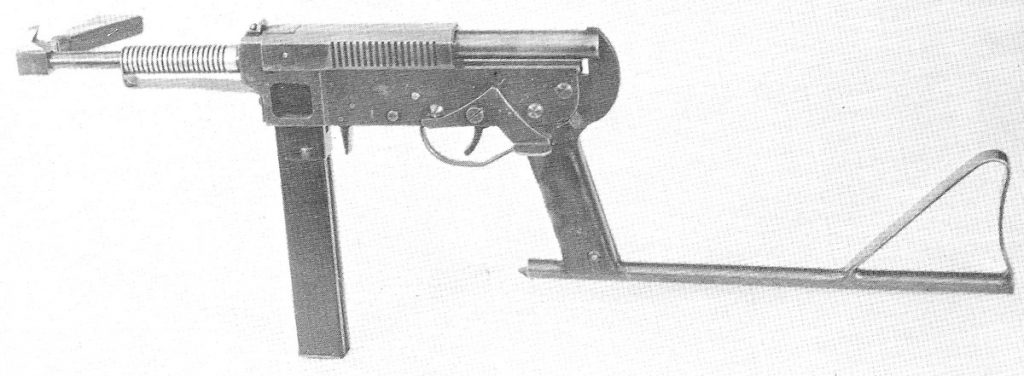The Norm Gun
The Norm Gun came first, and it’s got the best name for an SMG. I just imagine it telling a very long-winded joke with no punch line instead of going bang. In reality, the Norm gun was named after its creator Eric Norman who worked for BSA but developed the gun for the SOE.

The Norm gun was an open bolt, blowback-operated 9mm SMG. Nothing surprising there. What was interesting was how the weapon was charged and cocked. Instead of a charging handle, a slide was present, much like a handgun. This slide was retracted to open the bolt and prep the gun for fire. This also exposed about a 4-inch gap which exposed the guts of the gun to the mud and muck of the battlefield.

There was no safety on the gun, just a fire selection. The stock was mounted to the pistol grip and was fixed. It seemingly offered no support to the shooter. Normand mounted a side grip to the right side of the gun, which is rather odd for right-handed shooters. Their left hand would apparently go under the gun and grip the pistol grip.
It sounds off, but hell might have been effective. The SOE only ever made two prototypes of the Norm gun. The SOE found the gun to be too expensive to produce.H
1 Like
 . The BSA .5 , sometimes referred to as the Model 1924 , was a British heavy machine gun produced by Birmingham Small Arms.
. The BSA .5 , sometimes referred to as the Model 1924 , was a British heavy machine gun produced by Birmingham Small Arms.
History
BSA designed this .5-inch machine gun in 1924. It was intended as an observer’s gun on aircraft or an anti-aircraft gun on shipdecks, and was marketed for sale in these roles. The Royal Air Force arranged trials for the weapon in 1928 but found little to recommend in it, as its fire rate and magazine capacity were considerably lower than desired. No sales of the gun were made and by 1930 it was abandoned. One example is located in the National Firearms Center.
Design
Despite bearing a heavy resemblance to the Lewis gun, the BSA .5 internally had little in common, and was instead recoil-operated. The barrel and bolt carrier recoiled back upon firing until the bolt carrier would hit a stop while the barrel would reciprocate back into its original position. The empty casing would then eject while the bolt carrier was held back and then the carrier would be allowed to return forward when a new round was chambered. When the magazine depleted, both the barrel and carrier would remain recoiled, and the chamber open, until a new magazine was fitted.
The fire rate was low at 400 rounds per minute and Lewis-like flat-pan magazines held only 37 rounds, making it difficult to sustain lengthy fields of fire with the BSA .5. It was offered in both air-cooled and water-cooled variants, although it is not known if any of the latter version were ever produced.
The BSA .5 machine gun was chambered in a proprietary .5-inch BSA cartridge, which was roughly equivalent to the American .50 Browning cartridge.
The example located in the National Firearms Center is of an unusual design roughly akin to that of a bullpup with a side-mounted pistol grip mounted off the left of the weapon at a downward angle.
1 Like

